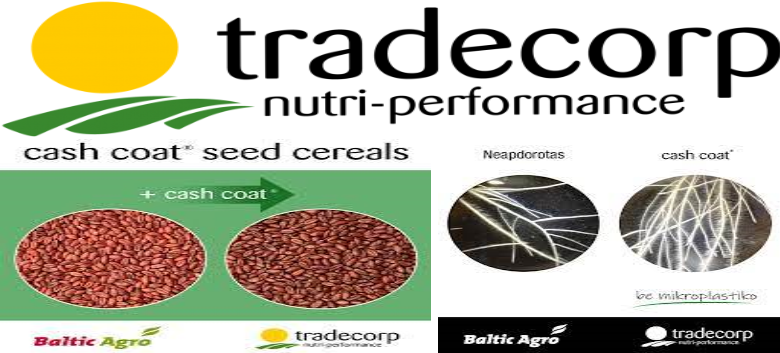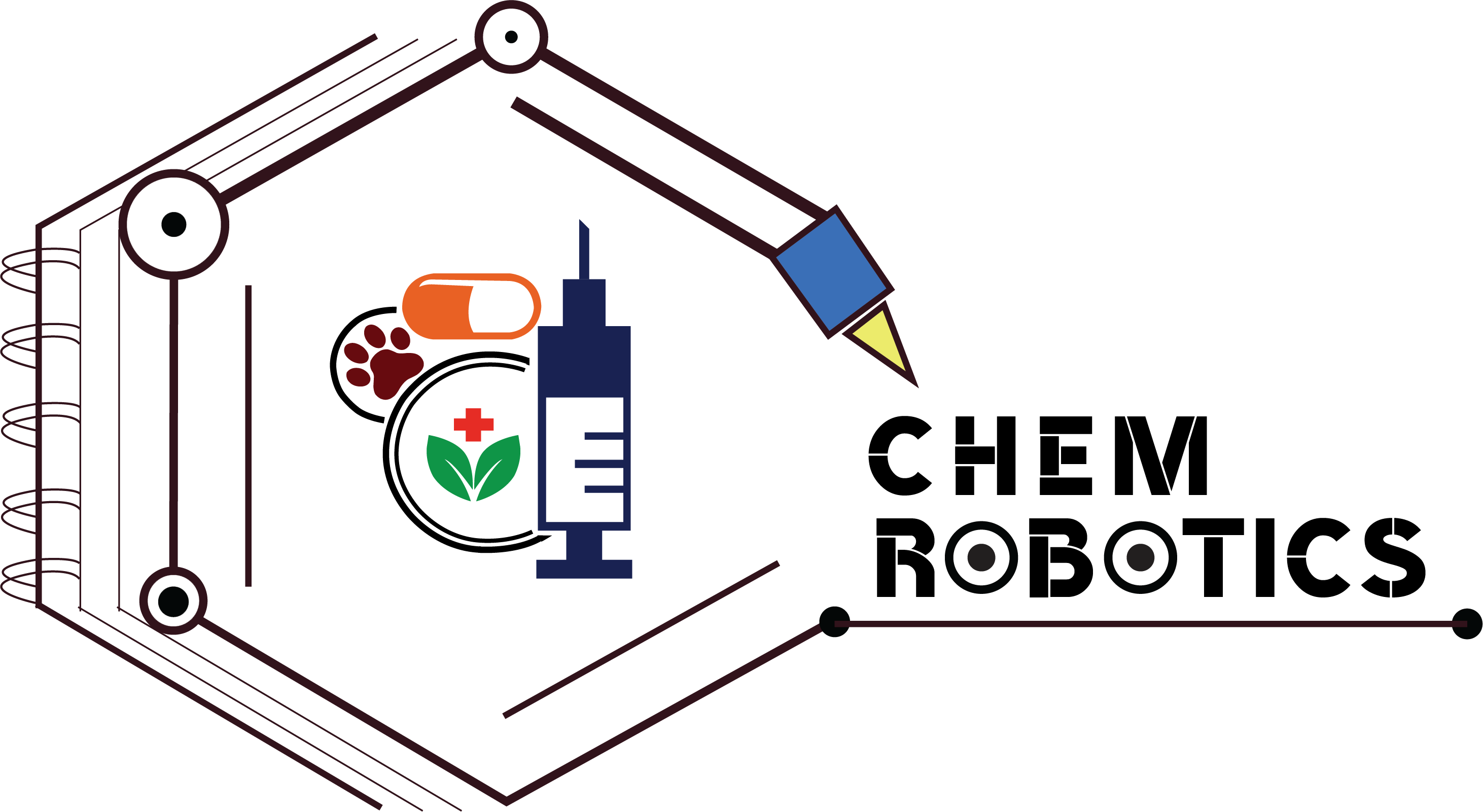Keypoints
- Tradecorp, a global benchmark in biostimulation and in the sustainable crop nutrition sector, their a mission is to feed the planet through healthy and safe solutions to create well-balanced, sustainable agriculture.
- Cash coat® seed cereals, a new tool for successful plant establishment. This patented microplastic-free seed enhancement formulation is based on biostimulants obtained from natural sources and is designed for small-grain cereals.
- Microplastics are small plastic pieces less than five millimeters long which can be harmful to our plants, ocean, and aquatic life.
- Microplastics exposure can cause toxicity through oxidative stress, inflammatory lesions, and increased uptake or translocation.

Tradecorp presents ‘Cash Coat’ seed cereals, a New Tool for Successful Plant Establishment.
The world is currently facing the combined challenges of feeding a growing population whilst also protecting the environment and producing renewable sources of energy. Moreover, regulations are becoming more restrictive and are pushing for a decrease in the amount of chemical pesticides and for improvements in resource efficiency. For instance, the European Green Deal and the microplastics regulation will soon become binding.
At Tradecorp, a global benchmark in biostimulation and in the sustainable crop nutrition sector, their mission is to feed the planet through healthy and safe solutions to create well-balanced, sustainable agriculture.
Tradecorp presents Cash coat® seed cereals, a new tool for successful plant establishment. This patented microplastic-free seed enhancement formulation is based on biostimulants obtained from natural sources and is designed for small-grain cereals.
Rapid, uniform field emergence is key.
Today, more frequent weather extremes are having an impact on grain productivity in Europe, and abiotic stress is considered to be the main reason for poorer yield growth rates in wheat.
Although a range of physical and chemical treatments have been used with seeds for a long time, new substances and microbial inoculants, as well as new seed coating techniques are bringing new opportunities. In a context of climate change and new restrictions on synthetic plant protectants, it is important to help the plant help itself, relying on seedling and plant vigour to cope with adverse conditions.
Rapid, uniform field emergence in a broad range of environments is key to efficient resource capture, weed control and resistance against stress.
Microplastic-free formulation to contribute to the UN’s SDGs
Irrespective of their source, microplastics are persistent, universal pollutants. When products containing them are used, microplastics can be released into the environment where they remain for centuries, as they are not biodegradable.
The use of microplastics is raising concern due to their accumulation in the environment, uncertainty in terms of human health, and the difficulties in detecting them, even under the microscope. Recent studies have shown that these plastic particles block seed pores, delaying germination and root growth.
Moreover, the first European microplastics regulation will soon be coming into force, to move the EU towards a circular plastic economy and contribute to reaching the 2030 Sustainable Development Goals by preventing and reducing the impact of certain plastic products on the environment, especially the marine environment, and on human health.
Well-balanced, sustainable agriculture
The Farm-to-Fork Strategy focuses on building food production systems based on alternative agricultural intensification programs which promote nutrient-use efficiency, reduce the need to control disease and pests, increase water-use efficiency and conservation, and which restore soil fertility, thus reducing inputs while maintaining high productivity levels.
What are microplastics?
Microplastics are small plastic pieces less than five millimeters long which can be harmful to our plants,ocean and aquatic life.
Hypothesized Harmful of Microplastics effects on plants
Altered soil structure
Microplastics can be viewed conceptually as a soil physical contaminant and initial data suggest that, indeed, microfibers have led to lowered soil bulk density . This could translate directly to reduced penetration resistance for plant roots, and better soil aeration, and thus increased root growth. However, other effects are also possible: plastic films (2, 5, and 10 mm size fragments, added at 0.5% and 1.0%) have been shown to create channels for water movement, leading to increased water evaporation .This could lead to soil drying, with potentially negative consequences for plant performance.
Alterations to soil structure can have many other, secondary effects. It will be inevitable that a shift in a major soil parameter such as soil structure will cause changes in soil microbial community composition, even though it is difficult to predict such shifts, and also their functional consequences. If such changes also affect root symbionts, including mycorrhiza and N-fixers, this could translate to plant growth consequences.
Changes in the overall structure of soil can also affect the process of soil aggregation), with microfibers having had a negative effect on soil aggregation in this particular field study. Positive effects on soil aggregation are also possible if microfibers serve to entangle soil particles and thus aid in the soil aggregate formation process component. Soil aggregation, by influencing in turn soil structure, will have consequences for soil aeration and root growth, as discussed earlier.
We currently do not know if nanoplastic can affect soil structure as well, for example by exerting toxic effects on soil microbes important for the production of binding agents, or via altering the polarity of soil aggregate surfaces.
Nutrient immobilization
Plastic particles have a very high content of carbon and most of this carbon will be relatively inert, since the material does not readily decompose. Eventually this material will slowly be degraded, and given the very wide C : N ratio, this will lead to microbial immobilization. Given the very slow decomposition of most plastic materials, this will occur on a timescale that is likely irrelevant for any biological effects. However, effects like this are expected to be much more pronounced for microplastic material with lower persistence, for example biodegradable plastics. A first experimental study has shown that plant performance parameters (e.g. leaf area) decreased in the presence of biodegradable plastic residues added at 1.0% in a mixture of sizes possibly due to microbial immobilization (even though this was not measured in the study), which supports this idea. Such effects are likely comparatively short-lived but will be important to keep in mind when interpreting experiments on plant growth effects.
Contaminant transport or adsorption
Microplastics can add a surface to soil with different properties, for example hydrophobic surfaces. Contaminants with certain properties (e.g. hydrophobicity) could enrich on such particles and they could potentially be stable for longer periods of time. Phytotoxic substances already present in microplastics before they arrive in the soil (e.g. when added during manufacture), could be transported into soil with these microplastic particles. Toxic substances, either adsorbed onto surfaces (and within the particle ecocorona ) of microplastic particles in the soil, or already contained in the particles could negatively affect plant roots or their symbionts, potentially translating to negative plant growth effects. Alternatively, the adsorption of contaminants to microplastic surfaces could make other pollutants less available to soil biota and plants, thus exerting a protective effect. The latter has been observed in aquatic environments, and such effects may be transferable also to soils. Thus, there currently is considerable uncertainty whether pollutant effects will be enhanced or decreased by microplastic.
Direct toxicity
As particle size decreases, effects on biota are hypothesized to become more chemical/toxic, as opposed to physical. While microsized particles are not expected to be taken up into the root, the situation is different for nanoplastic particles. The existence of nanoplastic particles in soil has never been demonstrated, since current extraction and quantification methods either miss them, or do not deliver any size information. However, it seems quite likely that nanoplastics are present in the environment, if microplastic particles fragment into smaller pieces ( nanoplastic is < 100 nm). For example, Lambert & Wagner (2016) have demonstrated the appearance of nanoplastics from the degradation of polystyrene plastic cup lids under laboratory conditions (no soil). The rhizodermis of roots would likely be the primary place of interaction and a barrier for nanoplastic uptake. Although the mechanisms underlying nanoparticle uptake in plants are poorly described (Yang et al., 2017), it is accepted that nano-sized particles could enter into plant roots, and potentially cause damage (e.g. alteration of cell membrane, intracellular molecules, and generation of oxidative stress) (Navarro et al., 2008) – but there are no data for nanoplastic at present. If the plant is a crop, this could also mean that plastics may enter into the part of the plant that is intended for human or livestock consumption, thus entering the food chain (Bouwmeester et al., 2015). Nano-sized plastic particles could also be strongly sorbed onto soil surfaces, and thus rendered less effective. However, Awet et al. (2018) documented short-term detrimental impacts of polystyrene nanoplastics on soil microbial and enzymatic activity (in the absence of plants). Either way, effects on plant performance are expected to be at best neutral.
Soil microbial community and root symbionts
Plant performance depends heavily on soil biota and their diversity (Wagg et al., 2014), and in particular on root colonizing microbes, including N-fixers, pathogens and mycorrhizal fungi (Powell & Rillig, 2018). If microplastic causes changes in soil structure, these could influence microbial communities in soil (Vallespir Lowery & Ursell, 2019), potentially affecting mineralization rates, and communities of root-colonizing symbionts. Likewise, nanoplastics might also affect the soil-borne phase of symbionts, such as arbuscular mycorrhizal fungi, through toxic effects. This has not been shown for nanoplastic, but other nanoparticles can have effects on mycorrhizal functioning (Feng et al., 2013). We currently do not know the effects of microplastics or nanoplastics on the community composition of soil or root colonizing microbes, and thus the consequences of any such changes are at this point completely unclear; however, this needs to be a research priority.
Plant community-level effects
As discussed earlier, there is a wide range of plastic types, and also a diverse set of different mechanisms for affecting plant performance, with also different effect signs. It is thus quite clear that different plant species in a community could be affected to a different degree by the addition of microplastics (either as mixtures or single types). Thus, microplastics have the potential to affect plant diversity and community composition, and there are several mechanisms that can underpin shifts. For example, plant community properties are related to soil structure (e.g. soil aggregation). Thus, the significant effects of various microplastics types on soil structure have the potential to affect plant community composition. Plastic films, which increased soil water evaporation may lead to more pronounced drought and subsequently promote the growth of drought-resistant plant species in a community. Moreover, the soil microbial community strongly influences plant community composition, productivity and diversity. Changes in soil microbial composition or root-colonizing symbionts following microplastic addition may thus further influence plant community composition. For instance, if microplastic additions reduce soil microbial diversity or the abundance of root-colonizing symbionts, plant diversity could be decreased, due to the often positive effects of soil microbial diversity or root-colonizing symbionts on plant diversity Such effects on plant communities are more likely to occur in areas with higher micropla
About Cash coat:
Better establishment, Better resilience, Better yield!
Cash coat® seed cereals provides faster, more uniform germination, root stimulation and better nutrient uptake. Thanks to Cash coat’s® patented technology, each seed receives an accurate dosage and uniform dressing, ensuring biostimulant action.
To demonstrate this seed performance enhancement, Tradecorp, in conjunction with the Landlab research centre, has put together a time-lapse video showing the improved vigour and better rooting of the Cash coat®-treated seeds.
About Tradecorp India
Tradecorp are experts in crop nutrition, particularly micronutrients and plant biostimulation. Established in Spain in 1985, Tradecorp manufactures and distributes specialty fertilizer and crop nutrition products for agriculture.
Tradecorp has been working in India for more than 10 years working hand in hand with Indian farmers and offering solutions and technical support to increase yields, quality and food safety.
For more Information: Sign-in Websites for Agrochemical & Pharmaceutical Databases:
Website: https://www.chemrobotics.com/ (Agrochemical Databases)
Website: https://chemroboticspharma.com/ (Pharmaceutical Databases)

